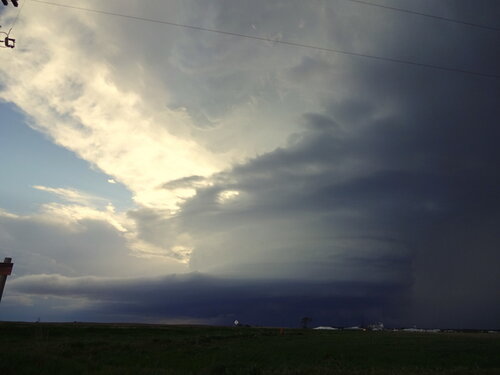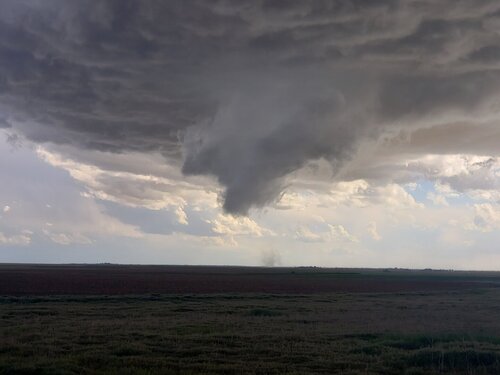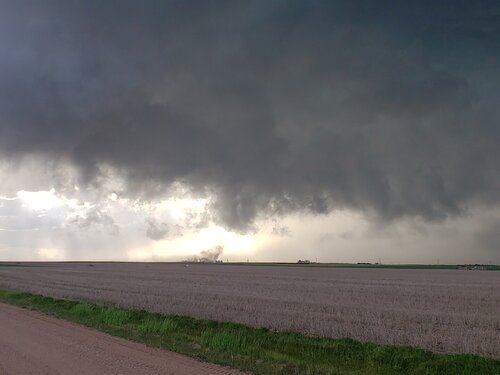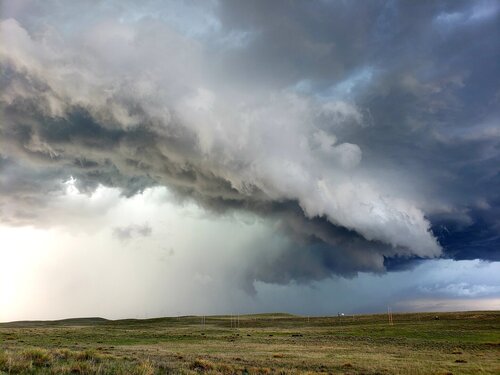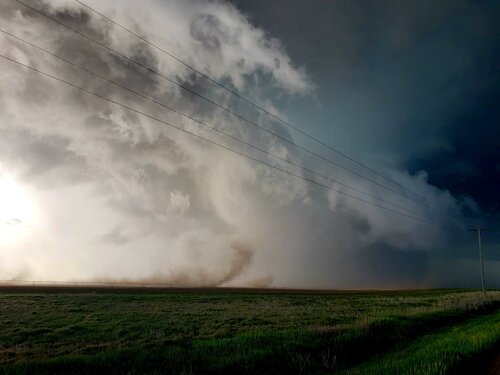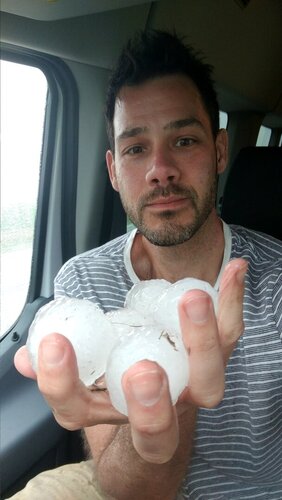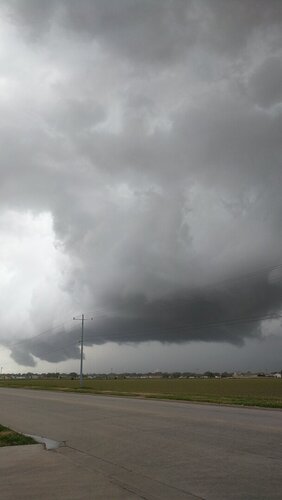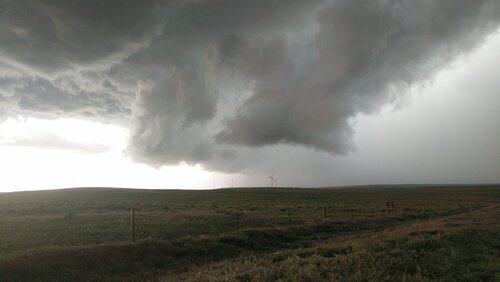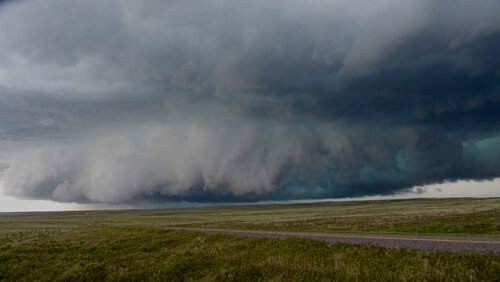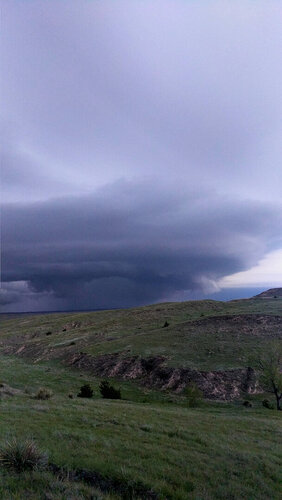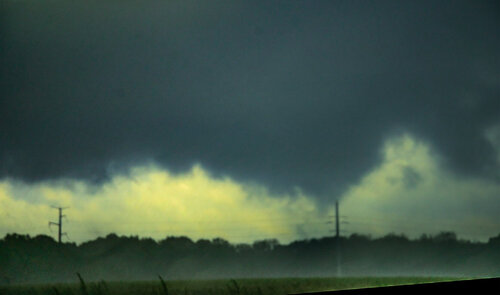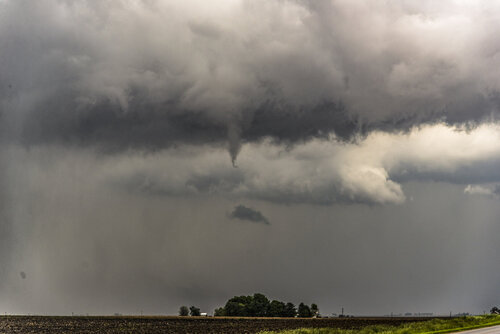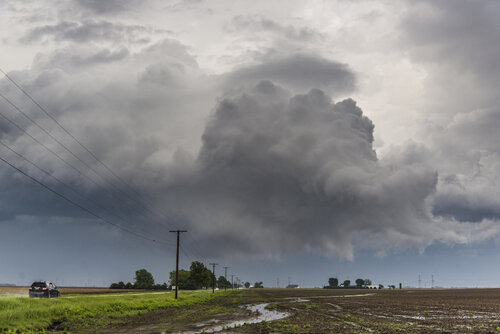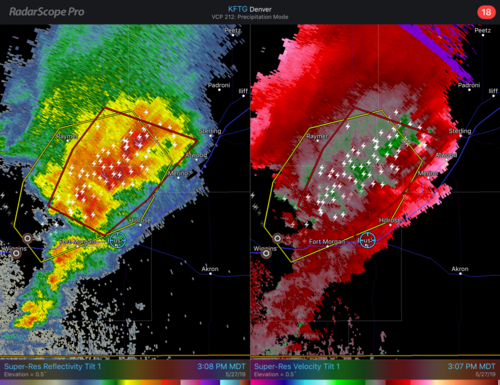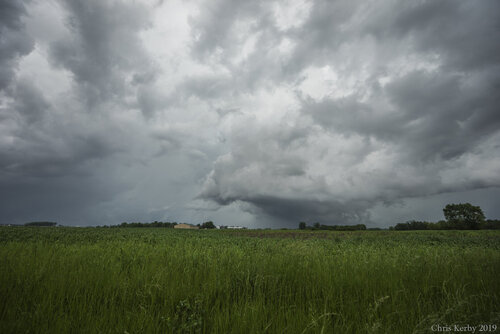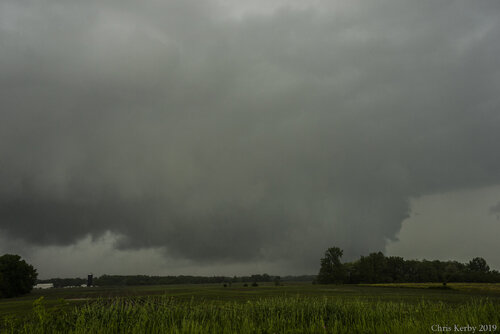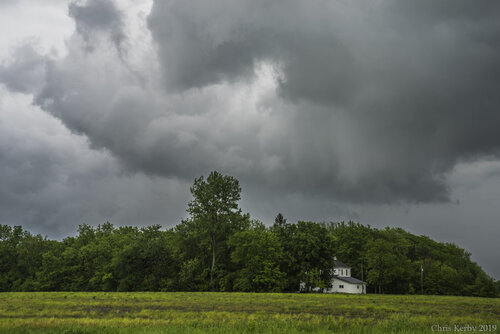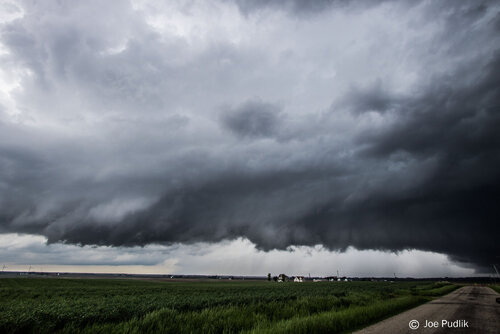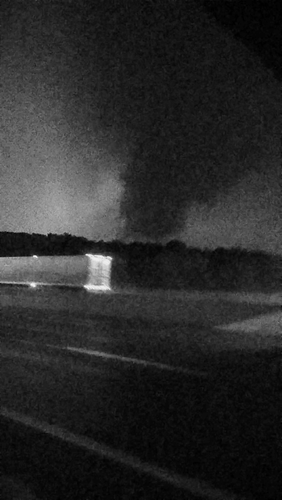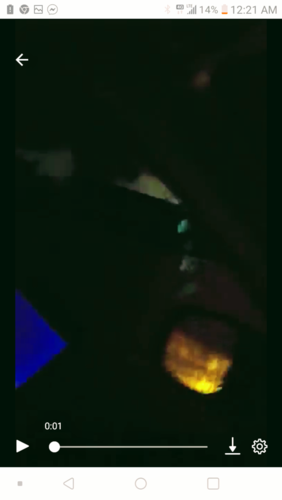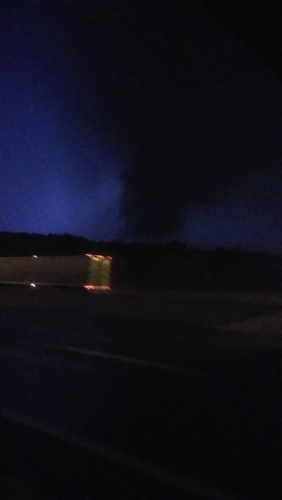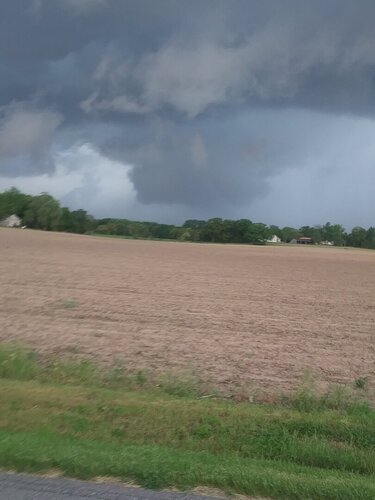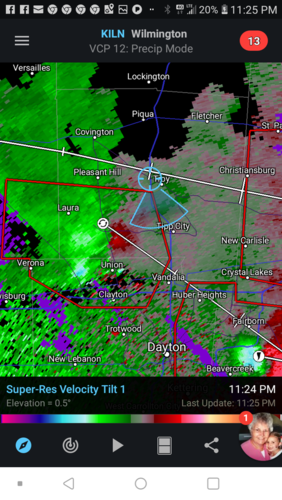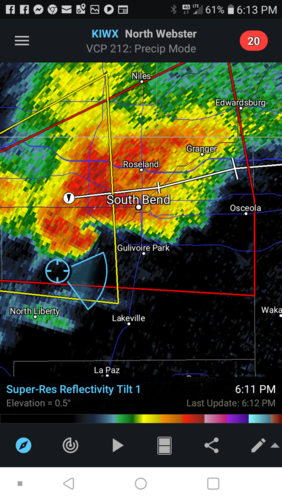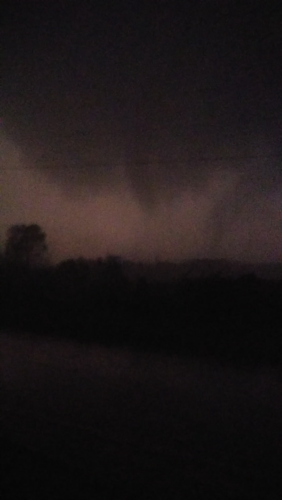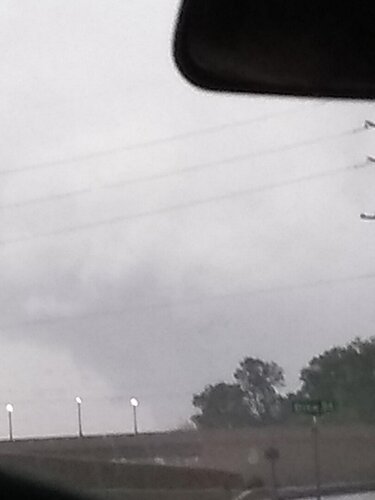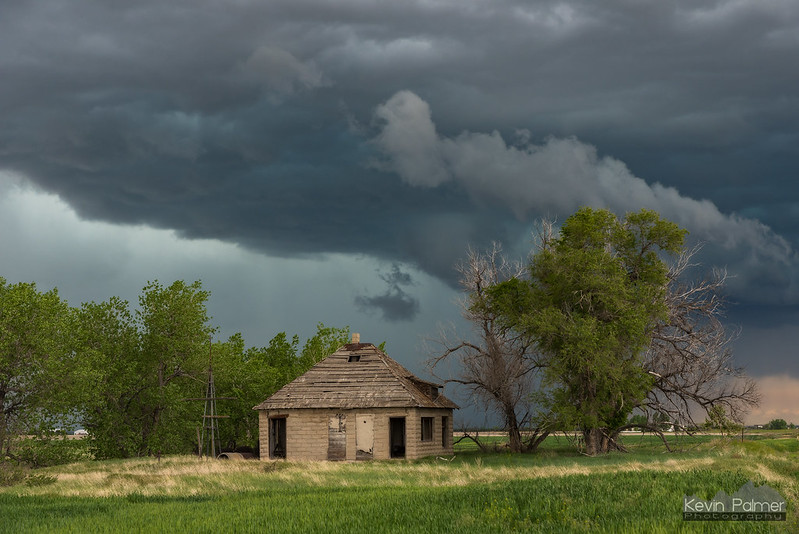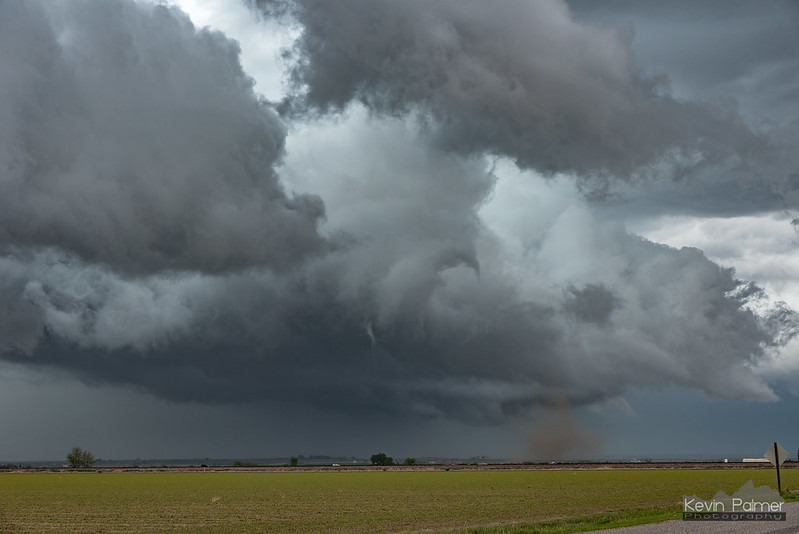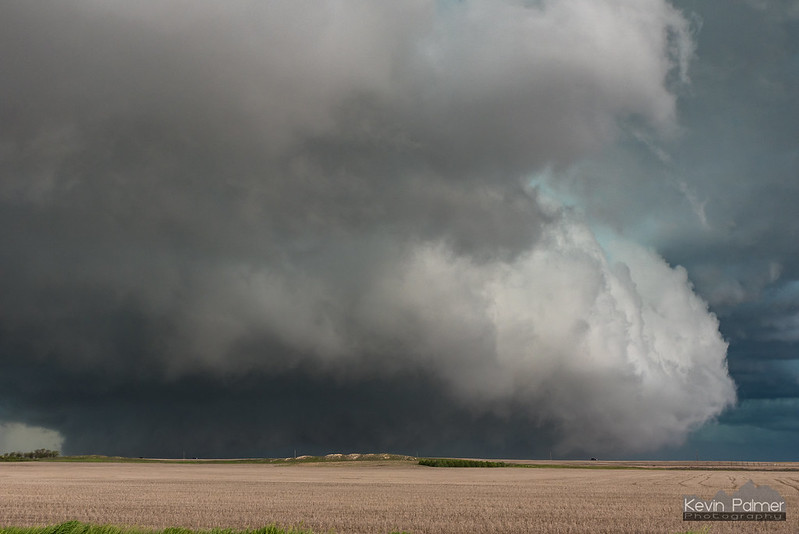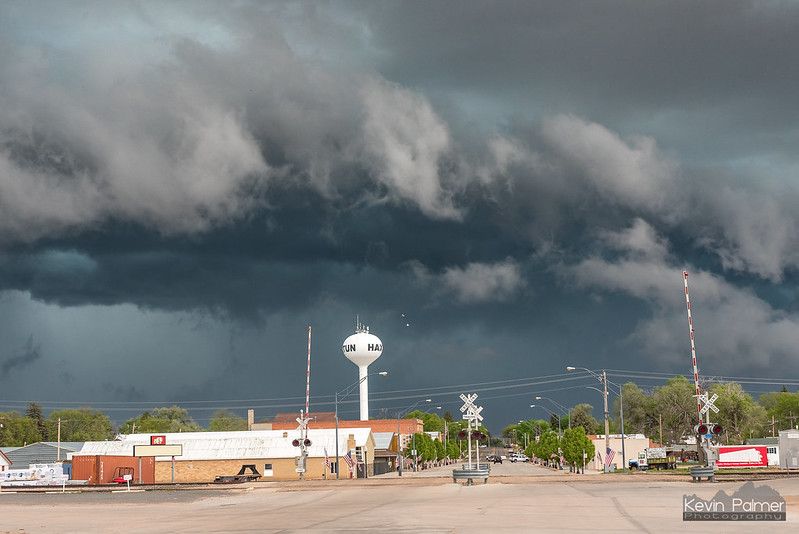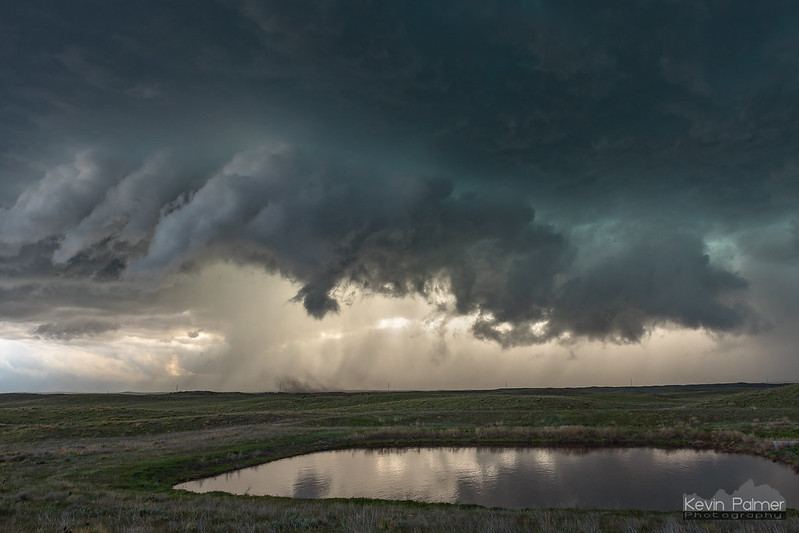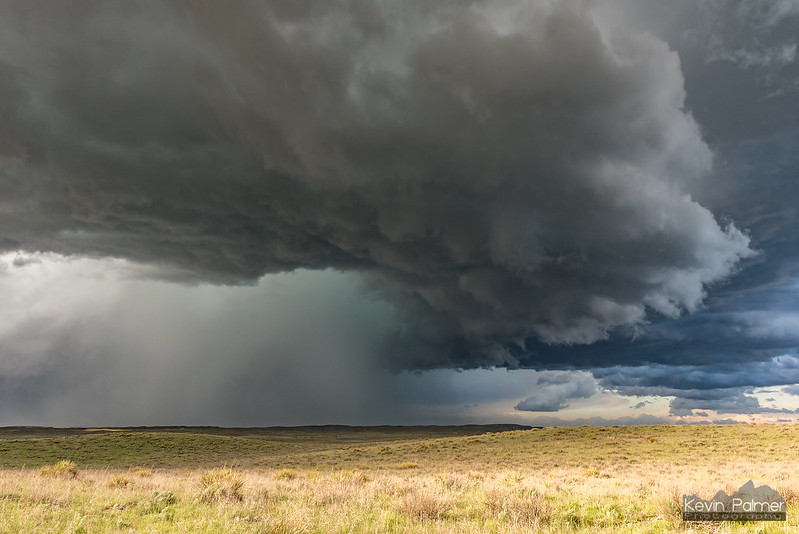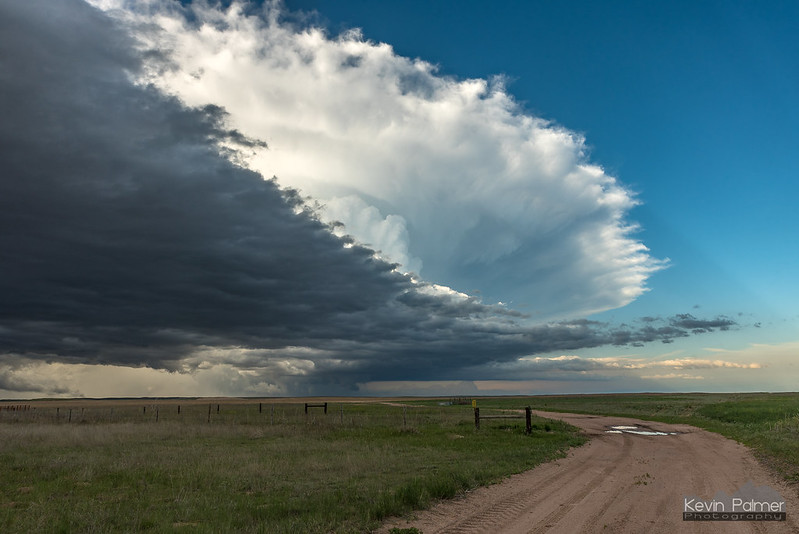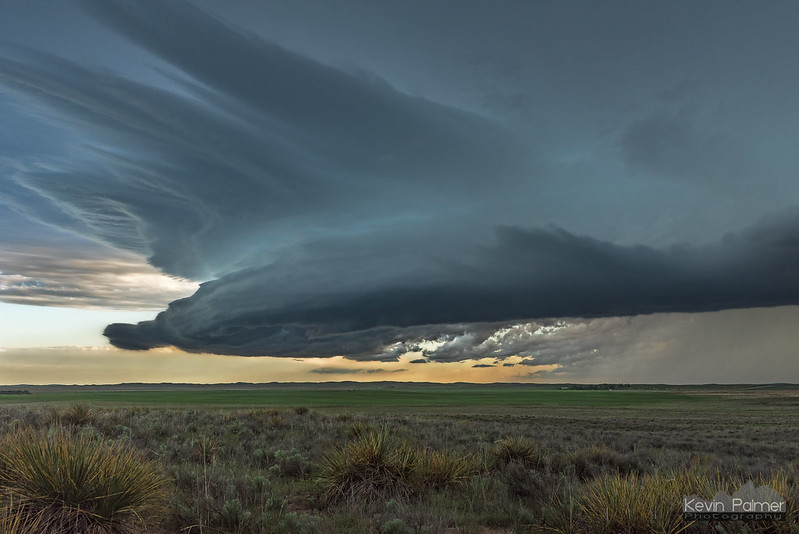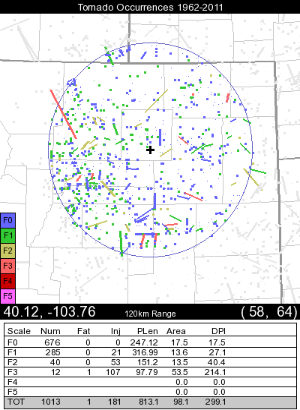Quincy Vagell
EF4
The story of this chase goes back to the 26th. I bailed the moderate risk in eastern Colorado early to start going east. I was really impressed with what I was seeing with respect to supercell/tornado potential across the Midwest today.
I made it to the Kansas City area late on the 26th and blasted east first thing this morning. The initial plan was to target either far southeastern Iowa or adjacent Illinois, on the east side of the Mississippi, near Keokuk. As I got to the Hannibal area, I was a bit concerned that a small convective complex moving into southeastern Iowa might not be ideal for a target. The more conservative play was to go east and then north toward the Peoria area, to be able to either continue north, or intercept storms coming from the west.
Another concern was that low-level wind fields were veering, particularly across the southern part of the target area. Even though the storms mentioned above had a relatively unimpeded inflow region, they were displaced south of the warm front (away from more substantial shear) and I wasn't sure they would gain much low-level rotation until the LLJ ramped up closer to sunset.
I chose to let the storms come toward me and even though radar was a bit jumbled looking with multiple storm interactions, I noticed that one particular storm appeared to be transitioning toward the dominant storm within a cluster. I approached near Williamsfield, IL and was somewhat surprised to see a well-defined, rotating wall cloud. The velocity signature on radar rapidly became more impressive and a tornado warning was issued.
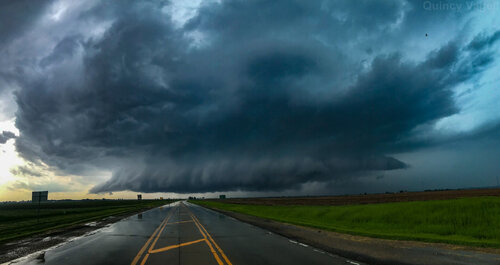
I stayed with the storm until it reached the north side of Peoria. It was the first time I had chased in the area and probably should have just bailed south to get on the east side of Peoria Lake. I wanted to stay close to the storm for as long as possible, in case it did produce. At one point, when it crossed directly in front of me on IL-40, it appeared as if it was very close to producing a tornado. A ragged, rotating cloud base was lowering, but after it passed by, I had to blast south and turn around to get back east again. This cost me about 20 minutes.
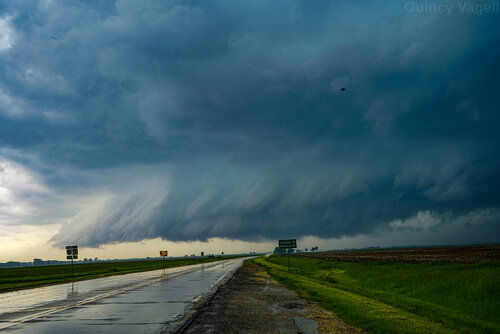
I eventually caught back up with the storm, but it was gradually weakening. I tried to gain ground on the southern end of a band of storms that was approaching the Indiana border, but this proved futile and I bailed a short time later. If the target area for the 28th wasn't several hundred miles farther west, I might have kept up with storms into Indiana. I'm not even sure how possible that would have been, given storm motions around 50 mph and speed limits that averaged below 55 mph, if you factor in stop lights, stop signs and population centers.
Overall, even though I did not see a tornado, it was a worthwhile chase. I have not had much luck seeing any sort of structure this year, nor have I seen much defined structure in the Midwest, period, while chasing. The tornado-warned supercell passing directly overhead made up for what was initially a very risky play. It turns out that the system sped up maybe 1-2 hours quicker than most models were showing. Instead of intense storms moving across northern Illinois around 4-6 p.m. at peak heating, the storms were already exiting Iowa by 2. Instead of northern Illinois being the epicenter, Indiana was full of tornado-warned storms through the late afternoon/early evening. I added Ohio to the title, given the extent of tornado damage there tonight, although most of those tornadoes probably happened after dark.
The lesson here, if there is one, is that the warm front is going to be the main focus for tornadoes, unless you have better backing of low-level wind fields. The wind profiles were not bad and that explains why I still encountered a supercell with a low-level mesocyclone, but it did not produce a tornado due to relatively weak low-level shear and winds that were somewhat veered.
I made it to the Kansas City area late on the 26th and blasted east first thing this morning. The initial plan was to target either far southeastern Iowa or adjacent Illinois, on the east side of the Mississippi, near Keokuk. As I got to the Hannibal area, I was a bit concerned that a small convective complex moving into southeastern Iowa might not be ideal for a target. The more conservative play was to go east and then north toward the Peoria area, to be able to either continue north, or intercept storms coming from the west.
Another concern was that low-level wind fields were veering, particularly across the southern part of the target area. Even though the storms mentioned above had a relatively unimpeded inflow region, they were displaced south of the warm front (away from more substantial shear) and I wasn't sure they would gain much low-level rotation until the LLJ ramped up closer to sunset.
I chose to let the storms come toward me and even though radar was a bit jumbled looking with multiple storm interactions, I noticed that one particular storm appeared to be transitioning toward the dominant storm within a cluster. I approached near Williamsfield, IL and was somewhat surprised to see a well-defined, rotating wall cloud. The velocity signature on radar rapidly became more impressive and a tornado warning was issued.

I stayed with the storm until it reached the north side of Peoria. It was the first time I had chased in the area and probably should have just bailed south to get on the east side of Peoria Lake. I wanted to stay close to the storm for as long as possible, in case it did produce. At one point, when it crossed directly in front of me on IL-40, it appeared as if it was very close to producing a tornado. A ragged, rotating cloud base was lowering, but after it passed by, I had to blast south and turn around to get back east again. This cost me about 20 minutes.

I eventually caught back up with the storm, but it was gradually weakening. I tried to gain ground on the southern end of a band of storms that was approaching the Indiana border, but this proved futile and I bailed a short time later. If the target area for the 28th wasn't several hundred miles farther west, I might have kept up with storms into Indiana. I'm not even sure how possible that would have been, given storm motions around 50 mph and speed limits that averaged below 55 mph, if you factor in stop lights, stop signs and population centers.
Overall, even though I did not see a tornado, it was a worthwhile chase. I have not had much luck seeing any sort of structure this year, nor have I seen much defined structure in the Midwest, period, while chasing. The tornado-warned supercell passing directly overhead made up for what was initially a very risky play. It turns out that the system sped up maybe 1-2 hours quicker than most models were showing. Instead of intense storms moving across northern Illinois around 4-6 p.m. at peak heating, the storms were already exiting Iowa by 2. Instead of northern Illinois being the epicenter, Indiana was full of tornado-warned storms through the late afternoon/early evening. I added Ohio to the title, given the extent of tornado damage there tonight, although most of those tornadoes probably happened after dark.
The lesson here, if there is one, is that the warm front is going to be the main focus for tornadoes, unless you have better backing of low-level wind fields. The wind profiles were not bad and that explains why I still encountered a supercell with a low-level mesocyclone, but it did not produce a tornado due to relatively weak low-level shear and winds that were somewhat veered.
Last edited:

